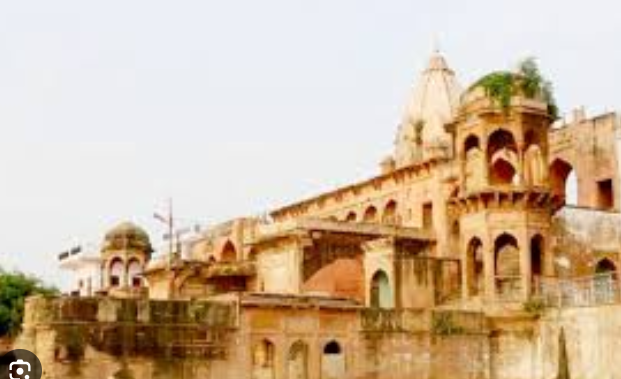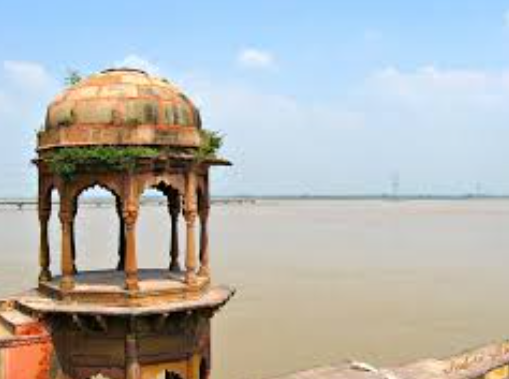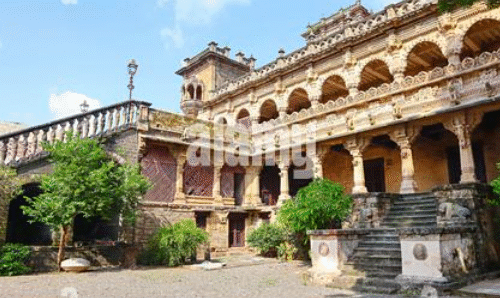Bithoor Fort is a famous fort in Uttar Pradesh, India. It is not just a building. It is a symbol of India’s past. Many important events happened here. The fort is full of stories. These stories are about bravery, freedom, and change. People visit Bithoor to learn about these events. They feel proud of their country’s history. This fort is a part of that pride.
History of Bithoor Fort
Bithoor Fort has a deep and long history. It was built during the time of the Marathas. The Peshwas, leaders of the Maratha Empire, used this place. They made Bithoor their home and base. The fort became very important during the 1857 war. This was the First War of Indian Independence. Nana Sahib, a great freedom fighter, lived in this fort. He planned and led the revolt from here. The British army attacked the fort. Many parts were destroyed in the war. But the remains still tell the story of that fight. The fort became a symbol of resistance. It stood for India’s wish for freedom.

Location of Bithoor Fort
Bithoor Fort is located in Bithoor town. This town is in the Kanpur Nagar district of Uttar Pradesh. It lies on the holy Ganga River. The town is peaceful and beautiful. It is about 22 kilometers from Kanpur city. You can reach here by bus, auto, or private vehicle. The roads are good and easy to follow. Many people visit the fort along with nearby places. There are temples and ghats around it. The place feels calm and full of faith.
Jhansi Fort – A Story of Courage and History
Importance of Bithoor Forts in Indian Freedom Movement
Bithoor Fort played a big role in India’s freedom movement. It was more than a home. It was a war center. Nana Sahib used it as his base. He was adopted by Peshwa Baji Rao II. After the Peshwa died, Nana Sahib became the leader. The British stopped his father’s pension. This made him upset. He decided to fight for justice. He planned the 1857 revolt from this fort. Soldiers, fighters, and leaders met here. The fort was full of energy and hope. Many brave people stood with him. This place became a key center for the first big freedom fight.
Design of Bithoor Fort
The design of Bithoor Fort is simple but strong. It was made using bricks and stone. The walls were thick and tall. There were big gates at the entrance. The fort had tall watch towers. Soldiers used these towers to keep watch. The fort had large open spaces inside. There were rooms for guards and officers. Some rooms were used to store weapons and food. The fort also had hidden ways to escape in danger. The whole design showed careful planning. It was made to protect and serve.
Architecture of Bithoor Fort
The architecture of the fort is in Maratha style. Red bricks were used in building it. The walls are strong but plain. Some parts have arches and pillars. The main gate is wide and solid. There were both army and living areas. Small windows were made for safety. Some walls had carvings and art. The rooms were cool inside even in summer. The design also gave a wide view of the river. This helped the guards keep the area safe. The structure was smart and well made.

Tourist Attraction and Present Condition
Today, Bithoor Fort is a popular tourist spot. Many parts of the fort are broken now. The British damaged it during the war. But some parts still remain. These old walls remind us of our brave past. Tourists come from many places to see it. They also visit nearby holy sites. These include Brahmavart Ghat, Dhruva Teela, and Valmiki Ashram. The area is neat and green. It is a good place for a peaceful day trip. Local guides are there to tell you the full story. They help people understand the fort’s true value.
Nana Sahib and His Connection to Bithoor
Nana Sahib was a brave and smart leader. He lived in this fort. He loved his country and fought for its freedom. He led the 1857 revolt from Bithoor. People respected him deeply. He gave shelter to many freedom fighters. After the British attack, he had to leave the fort. His life after that is not clearly known. Some say he went to Nepal. Others say he lived in hiding. But no one knows for sure. Even today, people remember him with love and honor. His name is linked forever with Bithoor.
Religious and Cultural Value of Bithoor
Bithoor is also a place of faith. It is holy for Hindus. Many believe Lord Brahma began the creation of the world here. The town is full of temples and river ghats. People take a holy bath in the Ganga. It is also said that Maharishi Valmiki wrote the Ramayana here. Lord Ram’s sons Luv and Kush were born in this place. So Bithoor is full of mythological stories. People come here for peace, prayer, and history. It is a place of both heart and soul.
Best Time to Visit Bithoor Fort
The best time to visit is between October and March. The weather is cool and nice during these months. Summers are very hot and hard for travel. Monsoon brings heavy rain. It makes roads slippery and travel risky. Winter is perfect for outdoor trips. You can walk around and explore. Festivals like Makar Sankranti and Kartik Purnima are also good times to come. The town becomes full of lights and joy during these times. Many cultural events also happen during festivals.

Conclusion
Bithoor Fort is not just an old building. It is a part of India’s story. It tells us about courage and freedom. Nana Sahib’s spirit still lives here. The ruins speak of war, strength, and hope. The design shows our rich architecture. The town of Bithoor adds spiritual charm. It is a place where past and present meet. Every Indian should come here once. It is a place to learn, feel, and remember. Though time has changed the fort, its soul is still strong. Read More



One comment on “Bithoor Fort – A Symbol of History and Courage”